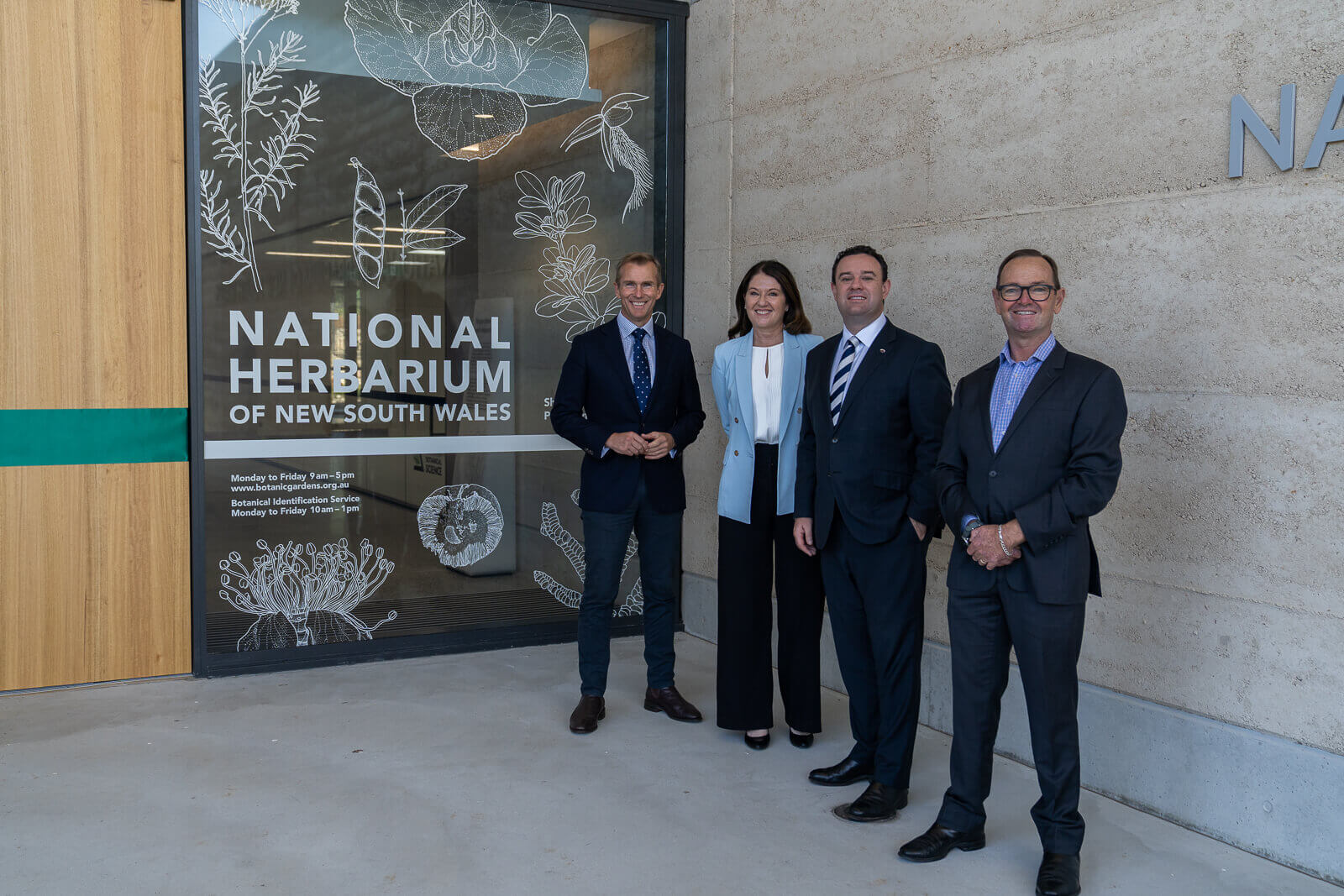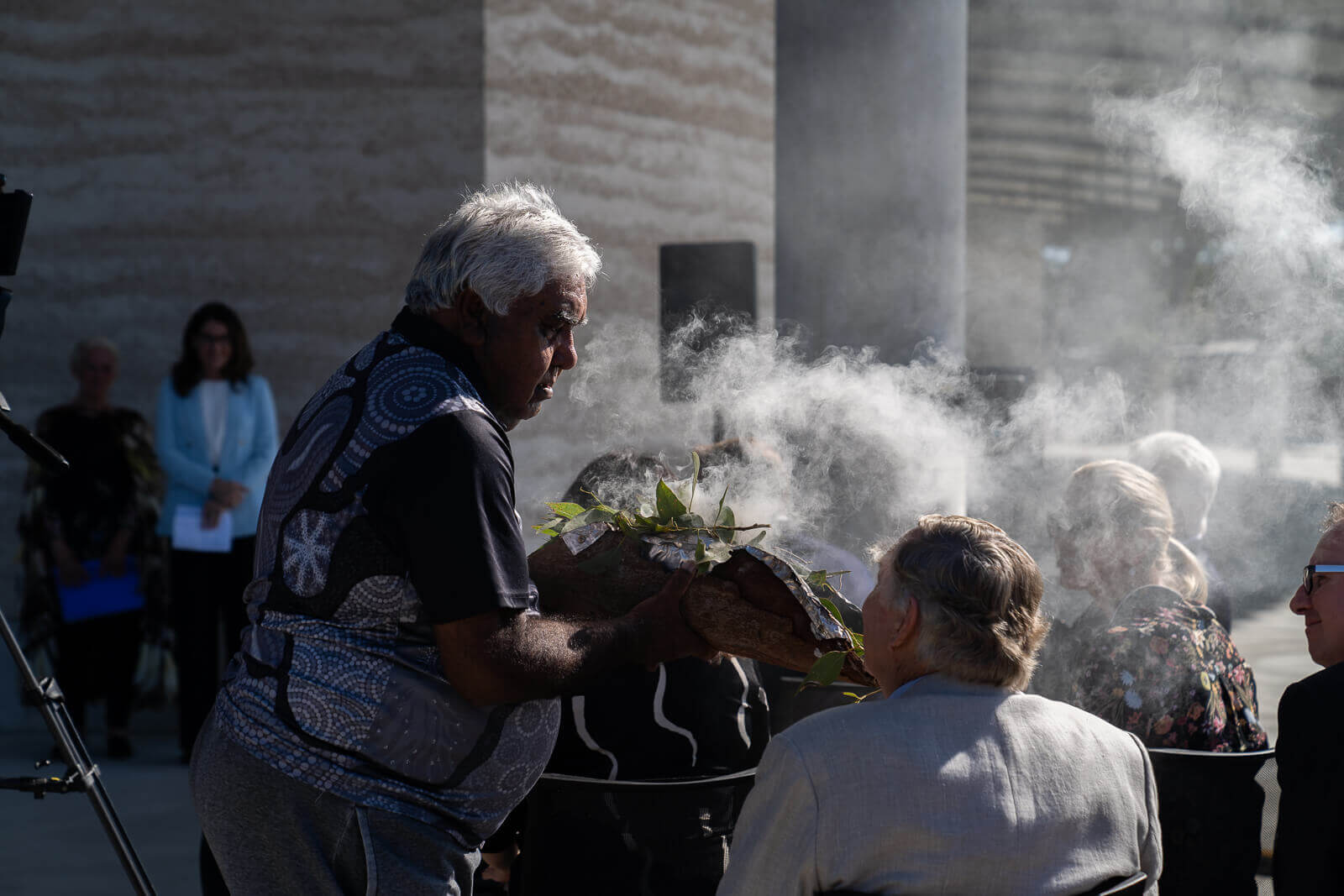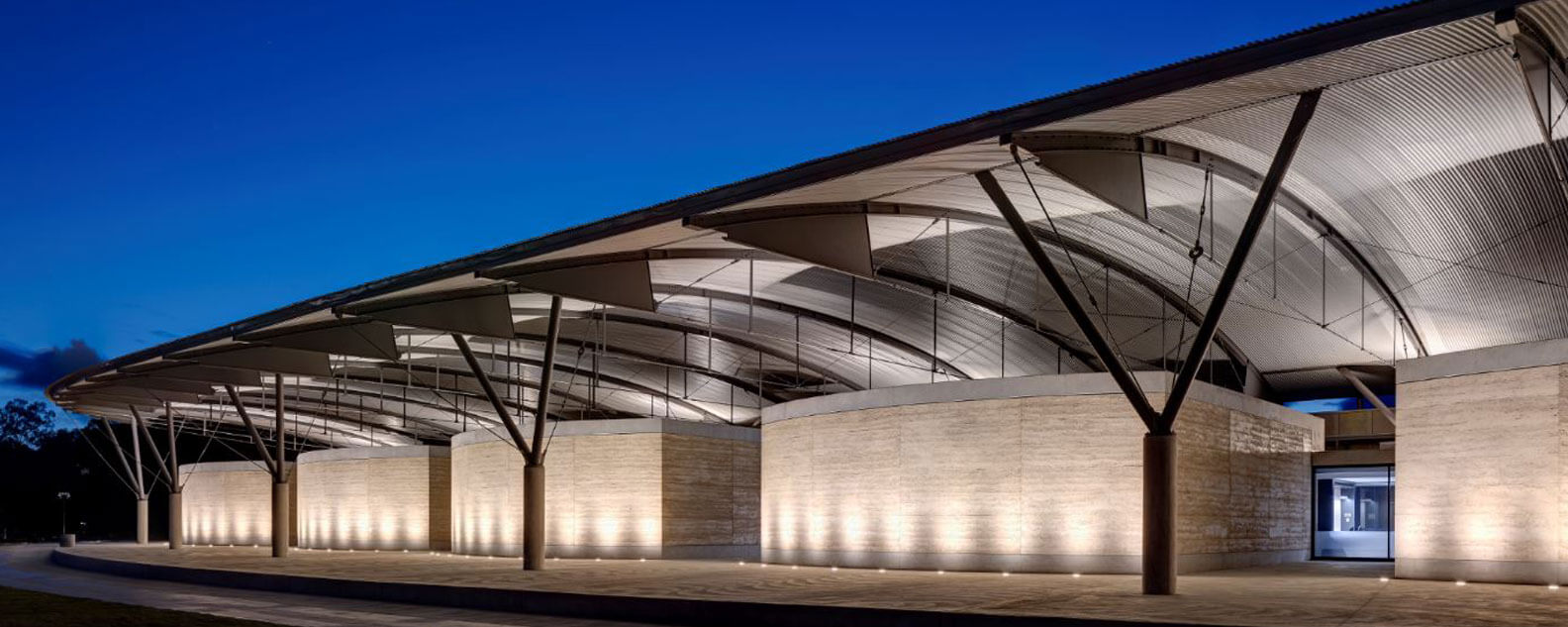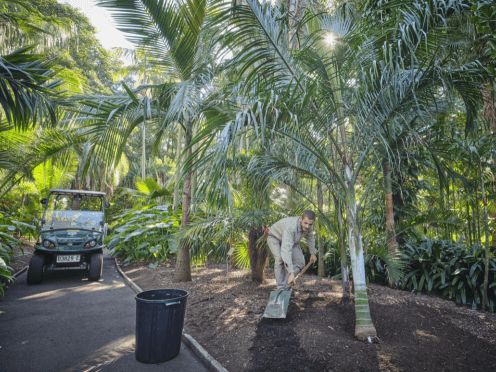To safeguard the growing collection, which also includes a significant amount of historical plant specimens collected in 1770, the State Government supported the construction of the new state-of-the-art Herbarium facility with a $60 million investment in 2018.
Previously located at the Royal Botanic Garden Sydney for almost 170 years, the new Herbarium now joins the award-winning Australian PlantBank and extensive Living Collection of native plants at Mount Annan.

The new mounting room at the National Herbarium of New South Wales.
Royal Botanic Gardens and Domain Trust Chief Executive Denise Ora said it was fitting the Herbarium was opened on the one year anniversary of the Australian Institute of Botanical Science.
"This flagship campus of the Institute here at Mount Annan is key to ensuring it is one of the nation’s premier botanical research organisations, contributing to conservation, education and research on a global scale," she said.
With more than 8000 new plant specimens being added to the collection every year, the world-renowned collection underpins vital scientific research and is essential for informing decisions about the conservation of our natural environment.
Minister for Infrastructure, Cities and Active Transport Rob Stokes said the new Herbarium held one of the most significant and precious botanical resources in the Southern Hemisphere.
“This world class facility will play a crucial role in discovering, understanding and protecting specimens for future generations and reinforce the Australian Institute of Botanical Science as a global plant science leader,” Mr Stokes said.

Minister for Infrastructure, Cities and Active Transport Rob Stokes, Royal Botanic Gardens and Domain Trust Chief Executive Denise Ora, Minister for Western Sydney Stuart Ayres and Member for Camden Peter Sidgreaves.
In the midst of climate change, habitat loss and the extinction crisis, Australian scientists are more motivated than ever to ensure plant species are conserved, which is vital to all life that depends on them
ROB STOKES, MINISTER FOR INFRASTRUCTURE, CITIES AND ACTIVE TRANSPORT
A key feature of the facility are the six protective vaults with precisely controlled environmental conditions, which are assisted by the building’s elegant, long span “fly-roof” to shield the precious collection from bushfires and extreme weather conditions. Over 100 leading scientists, researchers and staff will now be based at the ‘green’ facility which boasts sustainability benefits, from a large photovoltaic array on the roof that will generate electricity for the facility within and rainwater harvesting technology for irrigation. The project has generated over 350 jobs for local New South Wales residents, with expectations to create more as the science hub continues to expand and gives the region an added boost to its to economy with plans to host public programs, helping to carve a new identity for South-West Sydney.

The facility’s innovative, functional, and sustainable design is inspired by the waratah seed pod of New South Wales’s floral emblem.
Minister for Western Sydney Stuart Ayres said the National Herbarium of New South Wales would become an important cultural and scientific asset and safeguard the Australian Institute of Botanical Science’s growing collection of important plant specimens.
“It is fitting that this world-class facility has found a new home in the growing Western Parkland City, made possible through a commitment of $60 million from the NSW Government as part of the Western Sydney City Deal (WSCD),” Mr Ayres said.
“This has brought an important cultural and scientific attraction to the west."

Dharawal man Uncle Ivan performs the Smoking Ceremony at the Herbarium.
Member for Camden Peter Sidgreaves said he was proud to welcome the Herbarium to Sydney’s south-west.
As part of the monumental move to the new facility, the largest herbarium imaging project in the southern hemisphere took place to capture each specimen as a high-resolution image to create a new tech-enabled era of management which helps to reduce the physical handling of the fragile specimens and provide unlimited access to scientists, across the globe that will allow faster and more extensive research outcomes.
Find out more
To discover more information about the Herbarium or access its collection, visit the website.
If you are a journalist and have a media enquiry about this story, please click here for contact details and more information.

